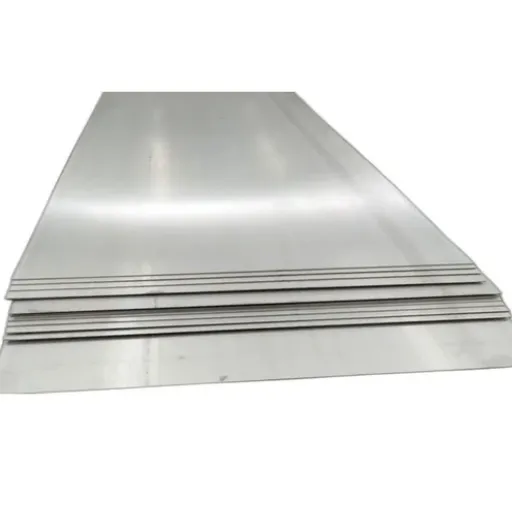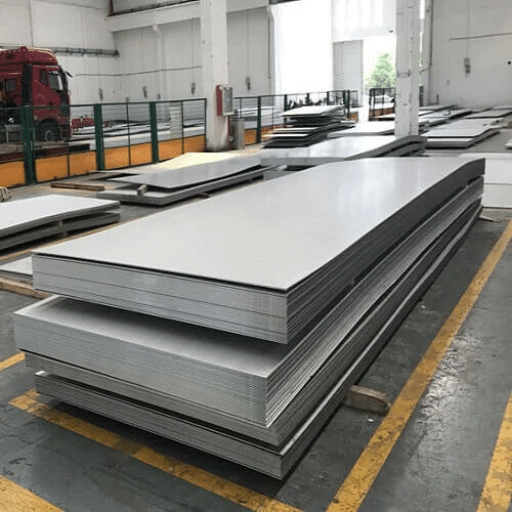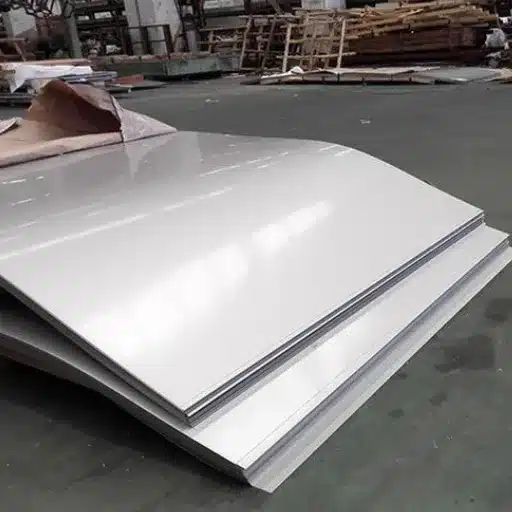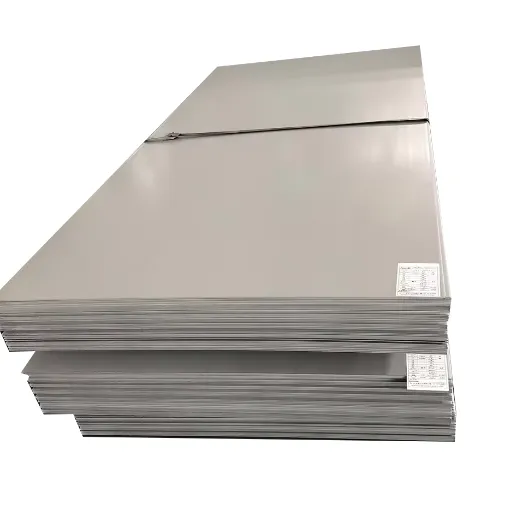Selecting materials for common items like jewelry, watches or medical equipment, is a tough task for people with delicate skin. Such metals can trigger reactions of skin irritations, reddening or allergic reactions when they are in contact with the skin for a long time. Hypoallergenic materials, among which stainless steel, take the lead here as the best option. Specifically, is the stainless steel really the one that does not bother sensitive skin? And what attributes make it preferable over other metals? This paper will delve into the study of stainless steel’s composition, its non-allergic properties, and how it is perceived as the most dependable material in terms of skin allergies. Whether you are a buyer of a new jewelry item or just intrigued by the science that underlies skin-friendly materials, this guide will give you the necessary insights to make educated decisions.
Understanding Stainless Steel
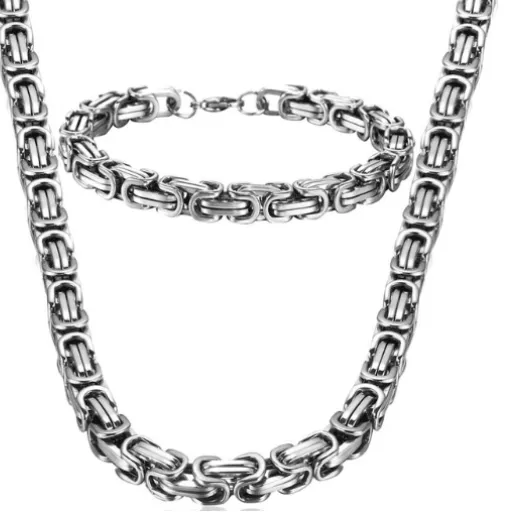
What is Stainless Steel?
Stainless steel is a metallic mixture mainly made up of iron, chromium, and different proportions of other elements like nickel, carbon, and manganese. Its main attribute is its ability to resist rust and corrosion, which is a result of the addition of at least 10.5% chromium in the metal. The chromium part reacts with the air and forms a very thin, protective layer on the steel that keeps it from being corroded or rusted even in the harshest environments.
The main reason for the extensive use of stainless steel is its power and flexibility. It is immune to discoloration, and to the wearing-off of its surface by more than high temperatures, and thus it has a wide range of uses from kitchenware and healthcare tools to industrial constructions and adornments. Moreover, stainless steel can be produced in different sorts and surfaces, all of which are intended to serve particular functional and aesthetic needs. For example, 316L stainless steel, which is very often used in jewelry, has more nickel and molybdenum in its composition, thus offering a higher degree of resistance to rust and abrasion than regular steel.
Apart from being practical, stainless steel is also appreciated for being non-allergic. The majority of the different types of stainless steel are made in such a way as to reduce the release of trace metals, thus lowering the possibility of skin contact causing allergic reactions. This is why it is a common material used for making products for people with sensitive skin or allergies to metals. Yet, it should be mentioned that not all kinds of stainless steel are non-allergic, since some of them might be containing a higher amount of nickel causing reactions in people with extreme allergies. That is why obtaining the specific type of stainless steel is essential for being able to determine its acceptability in different uses.
Composition of Stainless Steel
Stainless steel is an iron-chromium alloy that usually contains other elements like nickel, manganese, molybdenum, and carbon in varying amounts. The distinctive attribute of stainless steel is chromium that normally constitutes at least 10.5% of the alloy. This element takes the responsibility for the formation of a passive oxide layer on the surface, which acts as a barrier and thus extends the material’s life even under very corrosive environments.
Other elements of the alloy are a common practice to include in order to develop some particular capabilities. Nickel not only strengthens the material but also makes it more ductile while at the same time giving the alloy more resistance to corrosion especially in acidic environments. Molybdenum is routinely added to fight the corrosion through pitting and crevice in cases of chloride-rich locations. On the other hand, carbon determines the hardness and strength of the alloy where higher carbon grades are used in applications needing increased wear and heat resistance.
The different grades that stainless steel is available in are a reflection of its exact composition that varies according to certain mechanical and environmental requirements. For example, the austenitic grades (like 304 and 316) are popular for their exceptional corrosion resistance and easy working while other browning and martensitic grades give the metals magnetic behavior and conductivity, respectively. Thus, the diversity in properties makes stainless steel a very pliable material that fits nicely in a variety of industries, from building and medical devices to food processing and automobile manufacturing.
Properties of Stainless Steel
The major characteristic of stainless steel is determined by its exceptional mix of durability, resistance to corrosion, and toughness. The alloy with such characteristics is the one that has iron, chromium (more than 10.5%), and other elements like nickel, molybdenum, and carbon as the main constituents. When chromel is added, the coating on steel is made by forming a very thin passive layer that protects the steel from rusting and corroding even in very unfriendly surroundings and making the steel an ideal choice in such situations.
The versatility of stainless steel in terms of mechanical and thermal applications is another major feature of it. It provides high tensile strength and can take significant mechanical load without changing its shape. Also, unlike many other metals, stainless steel does not change its structure or properties when subjected to heat; the material keeps both its strength and resistance to scaling in high-temperature areas like that of power plants and chemical processing facilities.
Stainless steel is regarded as the most hygienic material and the most attractive one from the aesthetic point of view. Finally, its non-porous surface is the main reason why it resists bacteria and hence is widely used in food processing, medical, and pharmaceutical industries where sanitation is of the utmost importance. Its modern and shiny look is still the main factor that draws architects and decorators to it as a material of choice. This duality of functional and visual attributes accentuates the versatility of stainless steel through the different application sectors.
Hypoallergenic Properties of Stainless Steel
Is Stainless Steel Hypoallergenic?
Due to corrosion resistance and low reactivity with most skin types, stainless steel is frequently thought to be hypoallergenic. This feature is a result of its makeup, which generally consists of chromium, nickel, and iron. The chromium content creates a passive oxide layer on the surface that inhibits rust and minimizes the exposure of the skin to metals that might cause irritation. 316L stainless steel grades, which are commonly referred to as surgical or implant-grade, are the most valuable for their outstanding biocompatibility and thus, are used mostly in medical devices, jewelry, and sensitive applications. Unfortunately, not all stainless steel is hypoallergenic, and personal reactions may differ based on the specific grade and individual sensitivity.
Nickel, which is a frequent constituent in numerous stainless steel alloys, can provoke allergic reactions, especially in people with an existing sensitivity to nickel. Though nickel tends to be locked within the alloy and is hard to leach out in the case of high-quality stainless steel, very small quantities can still escape under some conditions like long exposure to moisture or abrasion. That is why people with extreme nickel allergies are generally recommended to go for alternatives free from nickel or stainless steel grades with very low nickel content such as 304L or 316L. It is important to check the alloy composition beforehand if the application involves piercings or products with prolonged skin contact.
Stainless steel has improved its hypoallergenic properties via recent studies and advancements in material science that have repositioned its formulations. Also, coating technologies such as Physical Vapor Deposition (PVD) can be employed to provide a barrier that reduces skin-metal interactions, making stainless steel even more appropriate for sensitive people. By knowing the intricacies of stainless steel’s composition and picking the right grade or treatment, users can effectively diminish the threat of allergic reactions while still enjoying the material’s durability and versatility.
Nickel Allergies and Stainless Steel
Nickel allergies represent a widespread hypersensitivity reaction and about 10-20% of the population experiences them. Moreover, the condition is more likely to occur in women. Allergic contact dermatitis is the most common skin condition associated with nickel that manifests as a direct reaction to nickel-releasing materials. The alloys with nickel of highest concentration among stainless steels are the austenitic grades like 304 and 316, since nickel improves both the durability and resistance to corrosion of these alloys.
In general, due to the passivation layer created on its surface, stainless steel is regarded as hypoallergenic despite containing nickel. This oxide coating inhibits the release of nickel ions in the usual conditions. However, such factors as the acidity, prolonged exposure, and environmental conditions can cause nickel ion leaching from stainless steel. For instance, certain grades have been shown to release nickel in minute quantities, and this is likely to occur in the presence of acid or wear over a long time, thus, at the same time, causing allergic reactions in highly susceptible people.
To eliminate the hazards, low-nickel or nickel-free stainless steel substitutes, that are ferritic or martensitic grades, can be used for the manufacturing of goods requiring hypoallergenic properties. Besides, the processes of electro-polishing, passivation, or applying protective coatings have even further reduced nickel ion release, thus ensuring user safety in sensitive contexts. The understanding of these interactions helps in the selection of materials, which are not only functional but also safe in situations where nickel allergies could be a problem.
Stainless Steel Jewelry for Sensitive Skin

Benefits of Stainless Steel Jewelry
Stainless steel has gained admiration in the jewelry industry because of its remarkable combination of a long-lasting material, attractive looks, and hypoallergenic properties. The following are five carefully examined advantages that together make the stainless steel jewelry an exceptional option:
1. Durability and Corrosion Resistance
Stainless steel is recognized for its extraordinary strength and ability to withstand conditions like corrosion, tarnishing, and rusting. Although frequently used, like water or sweat, stainless-steel jewelry still appears as good as new and intact as it was at first. Stainless steel grades such as 316L and 304 are ASTM certified and can even surpass the performance of some non-metal materials in terms of degradation resistance.
2. Hypoallergenic Properties
For those with delicate skin or allergic reactions to metals, the use of stainless steel, especially surgical-grade varieties like 316L, is practically allergic free and safe. Research indicates that the quantity of nickel ions released from fine-grade stainless steel is significantly less as compared to other metals, thereby lessening the chances of skin irritation.
3. Low Maintenance Requirements
In contrast to expensive metals like silver that need regular polishing to keep their shine, stainless steel jewelry is really a no-maintenance item. The resistant surface of the metal prevents it from being scratched or losing its luster, so it is perfect for everyday wear and requires very little cleaning.
4. Cost-Effectiveness
Stainless steel is a much less expensive choice when compared with the likes of gold and platinum, but still has the same durability and beauty as these metals. Thus, consumers get to enjoy high-quality jewelry without having to be concerned about huge financial outlays due to price efficiency.
5. Versatility in Design
Stainless steel is quite easy to shape into a variety of forms and provide the surface with a whole range of textures, from brushed through polished to matte. Moreover, the inclusion of design aspects like engraving or stone inlay is completely possible, thus opening the door to endless customization for contemporary as well as classical styles.
The marriage of practicality, affordability, and style has evolved to be stainless steel’s leading character in the jewelry market and with such a combination, it will continue to wield its power as the material of choice for those who want both functionality and grace.
Choosing Stainless Steel Earrings for Sensitive Ears
When it comes to choosing earrings for delicate ears, the stainless steel is the best option because of its non-reactive traits. Among other metals, especially those of the 316L and 304 grades, which are known as surgical stainless steel, the nickel content is very low, and thus the metal is quite safe for allergy-prone people. This is essential as nickel, which is present in a lot of metals, is the main reason behind contact dermatitis in people with delicate skin.
In contrast to plated metals that can be worn out and thus expose the skin to allergens, stainless steel does not change its properties or quality over time. It is non-reactive, and hence it will not rust or lose its shine when in contact with water, sweat, or skin care products. For people with very sensitive skin, titanium-coated surgical stainless steel is great as it offers hypoallergenic protection plus an extra layer of safety.
There is a rise in the need for nickel-free and hypoallergenic jewelry, and in this regard, stainless steel is ranked at the top for both price and safety. Market research indicates that more than 60% of skin-sensitive clients choose stainless steel for everyday wear, thus making it a reliable metal for those wanting strength together with luxury. The fusion of these attributes with a plethora of designs available means people can easily take care of both their style and skin.
Common Concerns: Skin Discoloration and Irritation
Discoloration and irritation of the skin are the two main issues that people usually complain about most when it comes to jewelry, especially for those who have sensitive skin. Discoloration is mainly caused by the interaction between the moisture on the skin, environmental conditions, and the metals present in certain types of jewelry. For example, the copper content in some alloys can oxidize when in contact with sweat or air, thus, causing the skin to be stained green or black. Although this problem is not dangerous, it can still be cosmetically objectionable. Similarly, another metal that can be found in cheaper jewelry, nickel, is well-known for prompting allergic reactions, which in turn, lead to rashes, redness, or even contact dermatitis.
The question from a materials science viewpoint is very simple because it comes down to the choice of biocompatible metals that would lessen the severity of the reactions. Titanium, surgical-grade stainless-steel, and niobium are hypoallergenic metals that are designed to be oxidation-free and thus, not cause skin irritation. A study done by dermatologists claims that niobium is the best option and it is safe for people with severe allergies because it does not leach ions that could trigger inflammatory responses. Just like niobium, stainless steel, particularly the 316L grade, is very resistant to corrosion caused by moisture and has very low nickel content which makes it suitable for long time wear even in the most unfavorable conditions.
Several precautions can be exercised to prevent instances of irritation or discoloration when selecting jewelry. One can choose jewelry with a protective coating, like rhodium plating, which would not only prevent the skin from coming into contact with the reactive metal components but would also give the piece a more aesthetically pleasing appearance as well. Another way would be to clean the jewelry regularly to get rid of sweat, cosmetics, or environmental pollutants thus lowering the risk of chemical reactions happening. In the case of wearers with known sensitivities, it is wise to pre-test the metals on small skin areas for a few days before the actual wear. Through proper knowledge of metals and preventive actions, the users will not only enjoy the accessories they have chosen but also keep their skin healthy and comfortable.
Comparisons with Other Materials
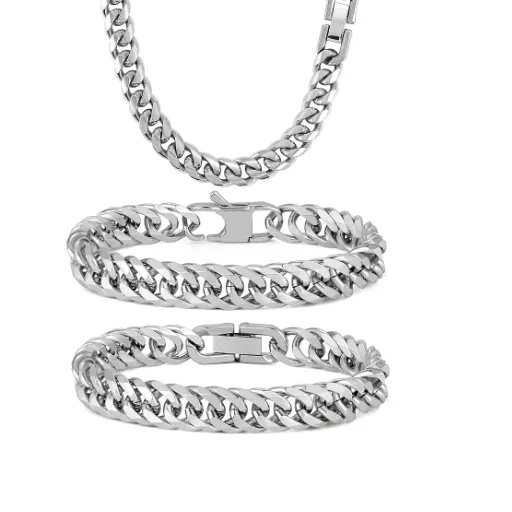
How Does Stainless Steel Compare to Other Jewelry Materials?
Stainless steel is a strong and reliable option that also happens to be cheap and hypoallergenic when compared to various traditional materials used for jewelry. Gold and silver which are the main precious metals usually get tarnished and need to be taken care of but on the other hand, stainless steel is very durably and yet so easy to maintain because of its chromium content which is usually at the range of 10.5% to 30%. Thus, this property has made it suitable for an everyday wear jewelry.
Even more, stainless steel has hardness like that of a rock and it is very much so when compared to the soft metals like gold, silver, or platinum. With a hardiness scale ranging from 5.5 to 6.3, steel becomes scratch-resistant and therewith a perfect material for rings and bracelets that inevitably come in contact with skin and suffer from wear. On the other hand, gold and silver have hardness ranging from 2.5 to 3 and 2.5 to 4, respectively, therefore, they are more vulnerable to surface disruption.
When it comes to the question of price, stainless steel gives an unparalleled bargaining power. It costs less than all the precious metals combined but gives off the same modern classy look. Titanium being another contender in the list of alternatives has the same resistance to corrosion and hypoallergenic properties but the price and difficulty in resizing due to its hardness are the drawbacks.
In terms of allergy potential, stainless steel, especially surgical-grade stainless steel (316L), is a perfect choice for people with delicate skin as it controls nickel leaching to a minimum. While some gold and silver alloys also try to avoid skin irritations, they usually still contain nickel or other additives that could cause problems with time.
In conclusion, stainless steel is not only a super alternative to the traditional jewelry materials, it also possesses durability, friendliness to the budget, and hypoallergenic qualities along with a styling that does not need to be and does not want to be compromised.
Nickel vs. Stainless Steel: Which is Better for Sensitive Skin?
Stainless steel is generally better for sensitive skin than nickel due to its hypoallergenic properties and lower likelihood of causing allergic reactions.
| Aspect | Nickel | Stainless Steel |
|---|---|---|
| Allergy Risk | High | Low |
| Skin-Friendly | No | Yes |
| Strength | Moderate | High |
| Rust Resistance | Low | High |
| Comfort | Poor | Excellent |
| Affordability | High | Moderate |
| Applications | Coatings | Jewelry, Medical |
Turning Skin Green: Myths vs. Facts
The issue of jewelry “turning skin green” is a phenomenon that has been misunderstood most of the time and also been misinformed. The metal coming from jewelry and skin oils or sweat or environmental moisture is basically what causes this effect; that is, it is the formation of metal salts caused by the reaction that is taking place. In widespread belief, it is not bad quality but rather the use of certain metals, mainly copper in this case, that is the main reason for it. If copper is subjected to air or moisture, it will not only oxidize but also the oxide will be in the form of green salt, which may transfer to the skin.
It is also a widespread belief that this reaction is not only harmful but also signs of an allergy. While the green color may not be nice, it is usually innocent and can be washed away with water. Furthermore, gold or silver-plated jewelry, depending on the thickness of the plating, may also not be safe from this effect if the plating has worn off, leaving the copper or brass underneath.
Modern technology in the jewelry industry sometimes can include protective coatings as well as alternatives such as stainless steel that can reduce the likelihood of the mentioned reactions. High-grade stainless steel will not only be immune to oxidation but also to discoloration due to moisture, thus it can be considered as an ideal choice for those who have worries about the phenomenon. Knowing the real reason behind skin discoloration will enable the customers to make wise choices about their jewelry and at the same time debunk the long-lasting myths about its importance.
Practical Tips for Choosing Stainless Steel Products
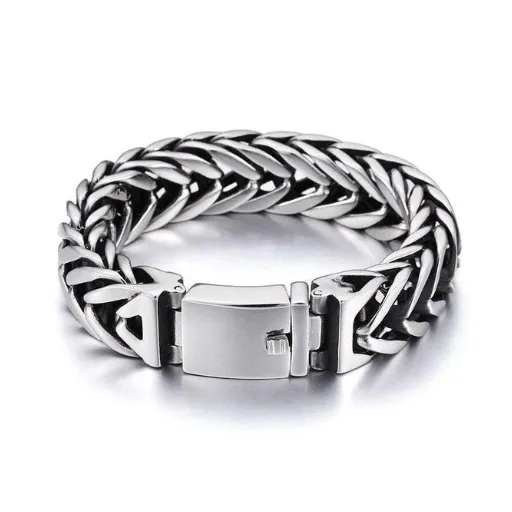
Choosing the Right Jewelry for Sensitive Skin
In the case of metal when choosing jewelry for sensitive skin, the first thing that I do is the selection of materials that are hypoallergenic and least likely to cause skin irritation. My preferred material, stainless steel, is always depending on its availability to be used in non-reactive products. Stainless steel is safe for skin that can be in close contact for a long time since it contains no nickel or other common allergens that are present in high concentration in other metals. In the case of stubs, rings, and necklaces, I am careful to select the ones that claim their products are as Surgical-Grade stainless steel and marketed as such, giving me an extra layer of comfort and confidence.
The next thing that I consider is the jewelry’s finish, which can have a significant impact on skin comfort. Polished and high-quality finishes eliminate the chances of rough edges or flaws that may eventually cause skin irritation. Additional plating is also one of the things that I do observe since some coatings do wear off and bring the reactive base metals to the surface. It is thus important to avoid mixed-metal jewelry for hypersensitive individuals and instead stick to solid stainless steel or other hypoallergenic choices such as titanium.
Lastly, I look after the jewelry with regards to maintenance. It is important to get rid of dirt and sweat buildup constantly as it is one of the main causes of irritation. Simple routines like using a soft cloth to wipe down jewelry and avoiding exposing it to moisture for long periods of time work great for me. With proper selection and maintenance of jewelry, I can effectively manage skin sensitivity problems and continue to wear my favorite accessories without feeling uncomfortable.
Maintenance Tips for Stainless Steel Jewelry
Stainless steel jewelry is very durable, and at the same time, it offers a wide range of aesthetic options; however, one of the main prerequisites for its luster and integrity is good maintenance. One of the main benefits of stainless steel jewelry is that it cannot be easily tarnished or corroded, and this quality can be traced directly to chromium, which is present in the metal and helps form a protective oxide layer over the surface. On the other hand, it is still not totally resistant to wear-and-tear or dirt, and hence, it needs to be cleaned occasionally.
To maintain, clean and care for the stainless-steel jewelry, the routine is to mix warm water and mild soap. Place the jewelry into a solution for about two miutes, then use a soft-bristle toothbrush to gently scrub the area where dirt is collected. For even more difficult dirt and oil build-up, vinegar and water should be used because of the acidity of vinegar, which helps break down the residue without damage to the steel. also remember to dry the jewelry completely with a lint-free cloth to avoid spots caused by water.
In long-term storage, avoid stainless steel jewelry being exposed to harsh chemicals, for example, bleach, chlorine, or cleaning agents that can wear off the protective layer and cause the stainless steel to lose its shine and luster. Moreover, whenever the pieces are not being worn, keep them in different soft pouches or in a velvet-jewelry box that is lined so as to cause the minimum amount of scratches from contact with other items. This combination of preventative measures and regular cleaning practices can keep stainless steel jewelry looking its best for many toll years.
Recommendations for Sensitive Ears
For the people who have sensitive ears, it is very important to use hypoallergenic materials in order to cut down the chance of irritation or allergic reactions to the skin. The best choices are surgical-grade stainless steel, titanium, and nickel-free gold because these materials are non-reactive and biocompatible. The earrings made of these materials are not going to create redness, itching, or inflammation, thus, they are suitable for all-day wear.
Moreover, cleaning earrings regularly is necessary to get rid of bacteria and dead skin cells that can make the sensitivity worse. Cleaning can be done by putting the earrings in a solution of warm water and mild soap or using a jewelry cleaner that is specially made for the material and that is also recommended. Before wearing make sure that the earrings are completely dry in order not to have irritation caused by moisture.
When already you have new earrings, you could start with lightweight designs to lessen the pressure on the stroll lobe. Also, it would be wise to stay away from earrings that have rough or sharp parts that can cause scratching. By adopting these measures along with good hygiene and right materials, those with sensitive ears can enjoy wearing accessories without the fear of skin irritation.
References
- Purdue University
Stainless Steel – Safety Data Sheet
This document highlights the potential for allergic skin reactions to nickel, which is often present in stainless steel. - University of Alabama at Birmingham (UAB)
Drink water, not mold. Five steps for a cleaner water bottle
Discusses stainless steel and its interaction with skin, particularly in the context of hygiene and safety. - Delaware Health and Social Services
Nickel FAQ
Explains how nickel, commonly found in stainless steel, can cause skin sensitivity and allergic reactions.
Frequently Asked Questions (FAQ)
Q: Is stainless steel a good material for sensitive skin?
A: In fact, stainless steel is basically deemed good for the majority of people and also for those with sensitive skin. It is the hypoallergenic nature of stainless steel that saves it from being a major skin irritant as compared to other metal types.
Q: What kind of stainless steel is the most recommended for sensitive skin?
A: 304 stainless steel which is often signified as hypoallergenic is the kind of stainless steel that is the most recommended for sensitive skin. The nickel content of this grade is the lowest which makes this stainless steel safe for the nickel-sensitive people who otherwise have to be careful in choosing metals for the jewelry.
Q: Is it possible that skin reactions are caused by stainless steel jewelry?
A: Hypoallergenic and also less irritating to skin is the high-quality stainless steel, but still there is a small chance that some individuals may have skin reactions if they are extremely sensitive to nickel.
Q: What does it mean if one says that steel is hypoallergenic?
A: Hypoallergenic is a term used to describe a material that has very low or no chances of causing allergic reactions. In most cases, hypoallergenic stainless steel is the one with very low nickel content and thus it is considered safer for the skin that is sensitive to metals.
Q: Is it true that surgical steel is good for sensitive skin?
A: You could say so, as surgical steel is a type of stainless steel that has been used in the medical industry. Its high resistance to corrosion and its being hypoallergenic make surgical steel a good option for sensitive skin.
Q: How would I know if the stainless steel I use is of high quality?
A: One way to tell that you are using quality stainless steel is when you look for 304 or surgical steel jewelry. Also, check for hypoallergenic labels, so that you won’t have to deal with the skin reactions that caused the use of non-hypoallergenic materials.
Q: What are some skin reactions that can be caused by metals?
A: In the case of metals, some common skin reactions are redness, itching, and color change. Metals that cause the most skin problems are nickel and chromium, which is why it is wise to choose stainless steel with low nickel content.
Q: Are there any specific types of stainless steel that you would advise against?
A: A person who is allergic to nickel should steer clear of lower grades of stainless steel that have high nickel content. When it comes to delicate skin, always prefer the premium materials like 304 stainless steel.
Q: Does stainless steel jewelry make your skin darker?
A: Generally, the answer is no. So, stainless steel is less likely to turn the skin around it a darker shade and thus, it is the best metal choice for sensitive skin. Cheaper quality pieces might be hiding additional metals that could cause skin reactions.
Q: Why is stainless steel usually suggested for sensitive ears?
A: When it comes to sensitive ears, stainless steel is recommended because its chance of causing irritation and allergic reactions is less than that of other metals. The hypoallergic nature of the steel makes it a safe choice for earrings and other skin-contact jewelry.


